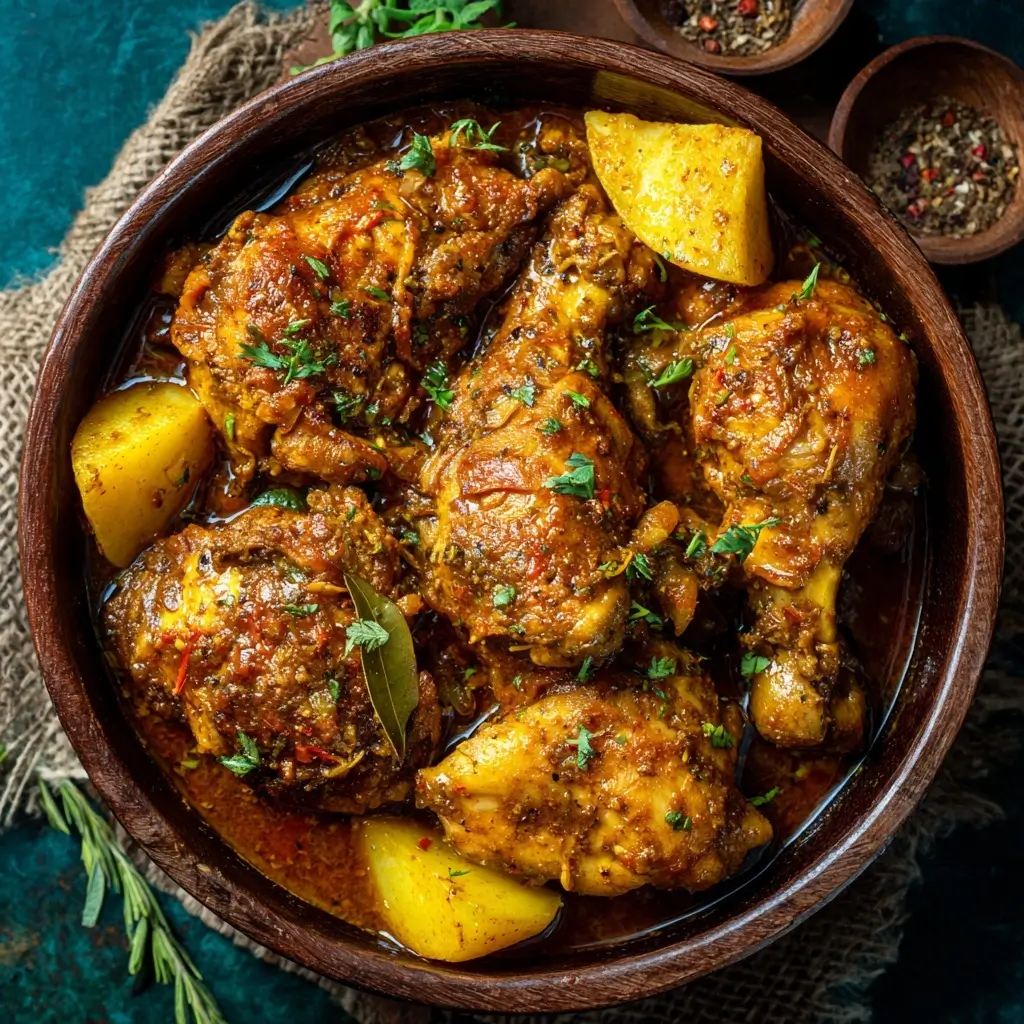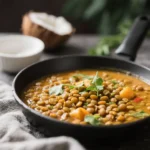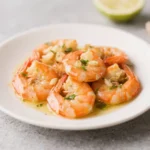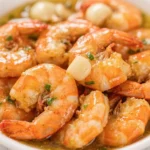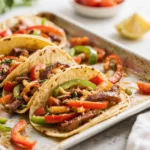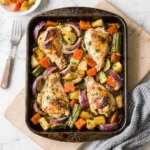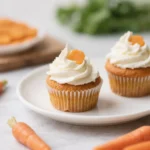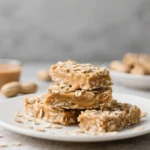Authentic Jamaican Curry Chicken: A Flavorful Culinary Journey
Jamaican curry chicken is more than just a meal—it’s a celebration of flavor, culture, and tradition. This beloved dish stands as a cornerstone of Jamaican cuisine, blending the island’s African, Indian, and Creole influences into one rich, aromatic masterpiece. With its golden-yellow hue, tender chicken pieces, and deep layers of spice, authentic Jamaican curry chicken is both comforting and exotic. Whether served with rice and peas, festival, or hard dough bread, this dish brings warmth to any table. In this comprehensive guide, we’ll explore every aspect of preparing this iconic Caribbean favorite—from its historical roots to step-by-step instructions that ensure restaurant-quality results in your own kitchen.
The History of Jamaican Curry Chicken
The story of Jamaican curry chicken begins not in Jamaica, but on the Indian subcontinent. During the mid-19th century, indentured laborers from India were brought to Jamaica following the abolition of slavery. These workers brought with them their culinary traditions, including the use of spices like turmeric, cumin, coriander, and fenugreek—key components of curry powders. Over time, these Indian flavors merged with local Jamaican ingredients and cooking techniques, giving birth to a uniquely Caribbean version of curry.
Unlike traditional Indian curries, which often feature complex spice blends and creamy sauces, Jamaican curry evolved to incorporate bold, earthy notes with a focus on allspice (known locally as pimento), Scotch bonnet peppers, and fresh herbs like thyme. The result was a spicier, more robust curry with a distinctive island flair. Today, curry chicken remains one of Jamaica’s most popular dishes, commonly found at family gatherings, street food stalls, and Sunday dinners across the island and throughout the diaspora.
Ingredients Breakdown: What Makes It Authentic?
The magic of authentic Jamaican curry chicken lies in its ingredient list—simple yet powerful. Each component plays a crucial role in building the depth and character of the dish. Let’s break down the essentials:
- Chicken: Traditionally, bone-in, skin-on chicken pieces (such as thighs and drumsticks) are used because they retain moisture and absorb flavor better during slow cooking.
- Jamaican Curry Powder: This is the soul of the dish. Unlike generic curry powders, authentic Jamaican blends contain turmeric, coriander, cumin, fenugreek, black pepper, and sometimes dried mustard seed. Many locals prefer homemade blends or trusted brands like Walkerswood or Dunn’s River.
- Scotch Bonnet Pepper: Known for its intense heat and fruity flavor, this pepper adds fire without overwhelming bitterness. It’s typically left whole to infuse heat gradually, then removed before serving.
- Onions, Garlic & Ginger: These aromatics form the flavor base. Yellow onions are preferred for their sweetness, while fresh garlic and ginger add sharpness and warmth.
- Thyme: Fresh or dried Jamaican thyme is essential. Its earthy, slightly minty flavor complements the curry perfectly.
- Green Onions (Scallions): Used both in the cooking process and as garnish, scallions lend a bright, mild onion flavor.
- Allspice (Pimento): A quintessential Jamaican spice, allspice berries or ground allspice deepen the flavor profile with warm, clove-like notes.
- Tomatoes: Fresh tomatoes or tomato paste help create a rich sauce base. Some recipes use canned crushed tomatoes for consistency.
- Liquid: Water, coconut milk, or chicken stock can be used to adjust the thickness of the curry. Coconut milk adds creaminess and subtle sweetness.
- Vegetables (optional): Potatoes and carrots are common additions, absorbing the curry’s flavor and adding heartiness.
Step-by-Step Recipe: How to Make Authentic Jamaican Curry Chicken
Ingredients:
- 3–4 lbs (1.5 kg) bone-in chicken pieces (thighs, drumsticks, or quarters)
- 3 tbsp Jamaican curry powder
- 2 medium yellow onions, chopped
- 4 cloves garlic, minced
- 1 tbsp fresh ginger, grated
- 2–3 Scotch bonnet peppers, whole (adjust to taste)
- 2 sprigs fresh thyme (or 1 tsp dried)
- 2 green onions, chopped
- 1 tsp ground allspice
- 1 large tomato, chopped (or 2 tbsp tomato paste)
- 2 medium potatoes, peeled and cubed
- 1 large carrot, sliced (optional)
- 2 cups water, chicken stock, or coconut milk (or a mix)
- Salt and black pepper to taste
- 2 tbsp vegetable oil or coconut oil
Directions:
- Prepare the Chicken: Rinse the chicken pieces under cold water and pat dry with paper towels. Season generously with salt, black pepper, and half of the curry powder. Rub the seasoning evenly over each piece and set aside for 15–30 minutes to marinate.
- Sauté the Aromatics: Heat oil in a large heavy-bottomed pot or Dutch oven over medium heat. Add onions and cook until translucent (about 5 minutes). Stir in garlic, ginger, green onions, and the remaining curry powder. Sauté for another 2 minutes until fragrant, being careful not to burn the spices.
- Brown the Chicken: Increase heat to medium-high. Add the seasoned chicken pieces in a single layer, skin-side down if applicable. Brown each side for about 4–5 minutes until golden. Work in batches if needed to avoid overcrowding.
- Build the Curry Base: Return all chicken to the pot. Add thyme, allspice, chopped tomato (or tomato paste), and Scotch bonnet peppers. Stir well to coat the chicken with the spice mixture.
- Add Liquid and Simmer: Pour in water, stock, or coconut milk to cover about halfway up the chicken. Bring to a gentle boil, then reduce heat to low. Cover and simmer for 30 minutes, stirring occasionally.
- Add Vegetables: After 30 minutes, add potatoes and carrots (if using). Stir gently to combine. Continue simmering, covered, for another 25–35 minutes, or until the chicken is tender, the vegetables are cooked through, and the sauce has thickened.
- Adjust Seasoning: Taste and adjust salt, pepper, or additional curry powder if desired. Remove Scotch bonnet peppers and thyme stems before serving.
- Rest and Serve: Let the curry rest for 5–10 minutes before serving. This allows the flavors to meld further. Garnish with fresh chopped scallions.
Tips for the Best Jamaican Curry Chicken
- Use Fresh Spices: For maximum flavor, use freshly ground curry powder or make your own blend. Store-bought powders lose potency over time.
- Don’t Skip the Marinating Step: Even a short marination enhances flavor penetration into the meat.
- Browning is Key: Properly browning the chicken builds a deep fond in the pot, which enriches the entire dish.
- Control the Heat: Keep the Scotch bonnet whole to manage spiciness. Puncturing it will release excessive heat.
- Simmer Slowly: Low and slow cooking ensures tender chicken and allows the sauce to develop complexity.
- Make Ahead Magic: Like many stews, Jamaican curry tastes even better the next day as flavors continue to meld.
- Coconut Milk Option: Replace half the liquid with full-fat coconut milk for a richer, creamier texture and tropical twist.
Variations and Customizations
Jamaican curry chicken is wonderfully adaptable. Here are some popular variations:
- Curry Goat: A festive alternative using goat meat, often prepared for special occasions.
- Vegetarian Version: Substitute chicken with chickpeas, jackfruit, or tofu, and use vegetable broth.
- Seafood Curry: Use shrimp, fish, or conch for a coastal twist. Reduce cooking time accordingly.
- One-Pot Rice Curry: Add parboiled rice directly to the curry during the last 20 minutes for a complete meal.
- Pineapple Addition: Some cooks add diced pineapple for a sweet-sour contrast that balances the heat.
- Dry Curry Style: Cook down the liquid completely for a drier, more concentrated curry—ideal for wraps or patties.
Health Considerations and Nutritional Value
While delicious, Jamaican curry chicken can be high in fat and sodium depending on preparation. Here’s how to enjoy it mindfully:
- Leaner Cuts: Opt for skinless chicken breasts or remove the skin after cooking to reduce saturated fat.
- Oil Control: Use minimal oil or substitute with olive or avocado oil for healthier fats.
- Sodium Awareness: Limit added salt and choose low-sodium stock. Rely on spices for flavor instead.
- Portion Size: Serve with generous portions of steamed vegetables or salad to balance the meal.
- Nutrient Profile (per 6 oz serving, approx):
- Calories: 320–400
- Protein: 28–35g
- Fat: 18–25g (varies with oil and skin)
- Carbohydrates: 15–20g (with potatoes)
- Fiber: 3–5g
- Rich in Vitamin B6, Iron, and Potassium
The turmeric in curry powder contains curcumin, a compound known for anti-inflammatory properties. Paired with ginger and garlic, this dish offers not only flavor but also potential immune-boosting benefits.
Frequently Asked Questions (FAQ)
Q: Can I use curry powder from other regions?
A: While possible, it won’t taste authentic. Jamaican curry powder has a unique blend with higher turmeric content and a distinct balance of warm spices. For best results, use a Jamaican brand or make your own.
Q: How spicy is Jamaican curry chicken?
A: The heat level depends on the Scotch bonnet pepper. Leaving it whole gives mild heat; slicing it increases spiciness dramatically. You can also deseed it to tone down the heat.
Q: Can I freeze Jamaican curry chicken?
A: Absolutely! It freezes well for up to 3 months. Cool completely, store in airtight containers, and reheat gently on the stove.
Q: What should I serve with Jamaican curry chicken?
A: Classic pairings include white rice, rice and peas (kidney beans in coconut milk), fried plantains, festival (sweet fried dumplings), or hard dough bread.
Q: Why did my curry turn out watery?
A: Simmer uncovered for the last 10–15 minutes to reduce the liquid. Alternatively, mash a small portion of potato into the sauce to thicken it naturally.
Q: Can I make this in a slow cooker?
A: Yes! Brown the chicken and sauté aromatics first, then transfer everything to a slow cooker. Cook on low for 6–7 hours or high for 3–4 hours.
Summary
Authentic Jamaican curry chicken is a vibrant, aromatic dish that captures the essence of Caribbean cuisine through bold spices, tender meat, and slow-cooked richness. Rooted in cultural fusion and perfected over generations, it remains a timeless favorite for home cooks and food lovers worldwide.
